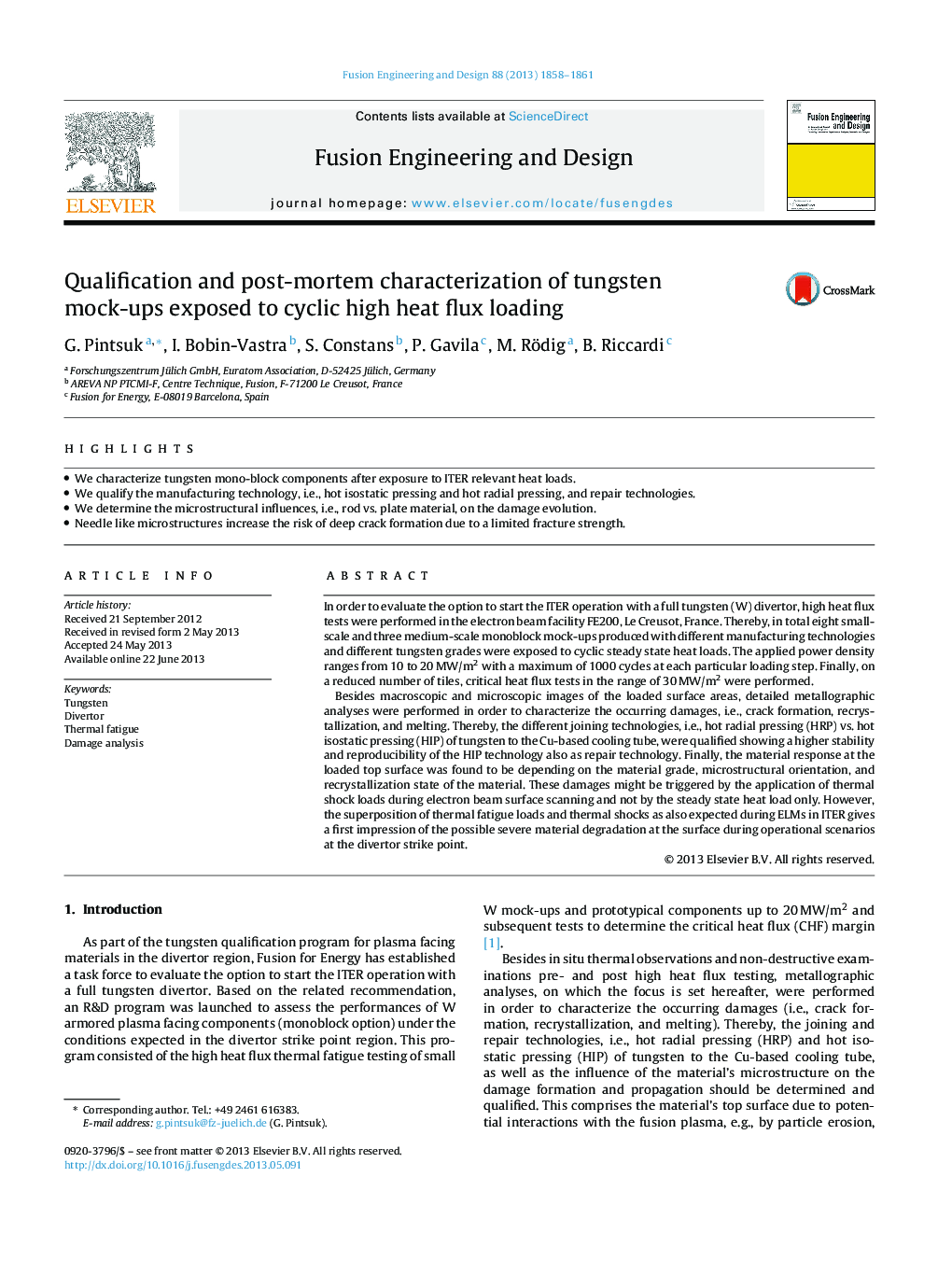| Article ID | Journal | Published Year | Pages | File Type |
|---|---|---|---|---|
| 6746439 | Fusion Engineering and Design | 2013 | 4 Pages |
Abstract
Besides macroscopic and microscopic images of the loaded surface areas, detailed metallographic analyses were performed in order to characterize the occurring damages, i.e., crack formation, recrystallization, and melting. Thereby, the different joining technologies, i.e., hot radial pressing (HRP) vs. hot isostatic pressing (HIP) of tungsten to the Cu-based cooling tube, were qualified showing a higher stability and reproducibility of the HIP technology also as repair technology. Finally, the material response at the loaded top surface was found to be depending on the material grade, microstructural orientation, and recrystallization state of the material. These damages might be triggered by the application of thermal shock loads during electron beam surface scanning and not by the steady state heat load only. However, the superposition of thermal fatigue loads and thermal shocks as also expected during ELMs in ITER gives a first impression of the possible severe material degradation at the surface during operational scenarios at the divertor strike point.
Related Topics
Physical Sciences and Engineering
Energy
Energy Engineering and Power Technology
Authors
G. Pintsuk, I. Bobin-Vastra, S. Constans, P. Gavila, M. Rödig, B. Riccardi,
